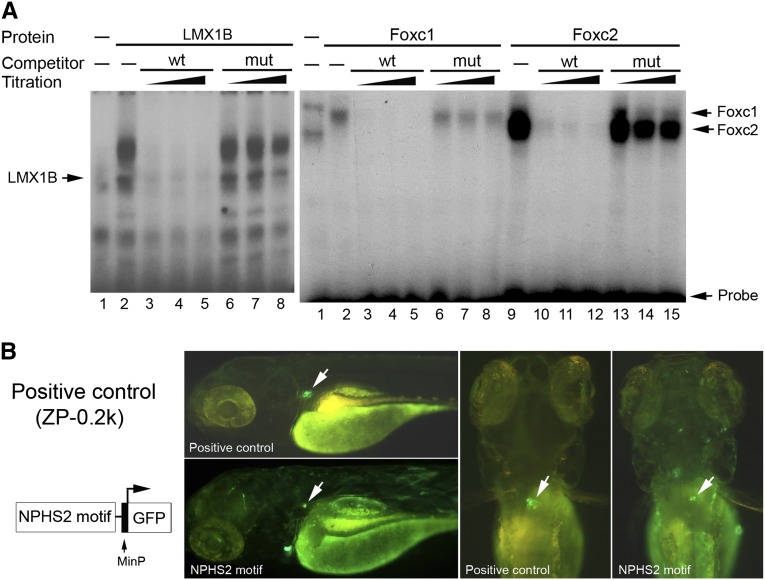Figure 6.
Characterization of the Lmx1b-FoxC motif in the human NPHS2 promoter. (A) EMSA. A putative Lmx1b-FoxC motif was identified at −743 bp in the NPHS2 promoter. Radiolabeled wild-type probes (wt) with the FLAT-F (TTAATAA) and the forkhead-binding site (CTAAATA) and recombinant LMX1B, Foxc1, and Foxc2 proteins were used in EMSA. Gel shift assay shows that LMX1B (lane 2 in LMX1B panel) binds to the FLAT-F element. Both Foxc1 and Foxc2 (lanes 5, 8 in FoxC panel) also bind to the forkhead site, but this binding of Foxc2 is much stronger than of Foxc1. For competition assays, 12.5-, 25-, and 37.5-fold excess unlabeled wild-type (wt) or mutant probes (mu), indicated with gradients from low to high, were used. Labeled probes were efficiently competed by unlabeled wild-type probes with elevated amounts, but not by unlabeled mutant probes (lanes 3–8 in LMX1B panel; lanes 3–8 for Foxc1, lanes 10–15 for Foxc2 in FoxC panel). This supports specificity of the bindings. (B) In vivo evaluation of the human cis-acting motif. A 178-bp motif-containing element was subcloned in the Tol2-based cfos-GFP plasmid illustrated in left panel. The plasmid ZP0.2k (Figure 1A) was used as a positive control. GFP expression (arrow) in zebrafish glomerulus is displayed laterally and dorsally.

